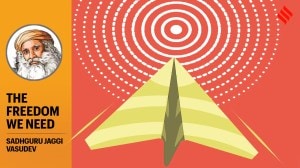Stay updated with the latest - Click here to follow us on Instagram
Activist Art
Twenty-five years after the Union Carbide pesticide plant in Bhopal released 42 tons of toxic Methyl Isocyanate,resulting in a death toll of more than 8,000 within 72 hours...
On the 25th anniversary of the Bhopal gas tragedy,photographer Samar Jodha presents a series of images of the Union Carbide factory
Twenty-five years after the Union Carbide pesticide plant in Bhopal released 42 tons of toxic Methyl Isocyanate (MIC),resulting in a death toll of more than 8,000 within 72 hours,what photographer and filmmaker,Samar Jodha,wants to highlight is not the chaos of shredded lives but a throbbing stillness that permeates the decrepit ruins of the Union Carbide plant.
To mark the culmination of his work in Bhopal as well as the 25th anniversary of the tragedy,Jodha will be presenting a multimedia installation of images of the Union Carbide,titled Bhopal-A Silent Picture,at Gallery Beyond from December 13 to 27.
Born in Jodhpur,Jodha studied photography at the New England School of Photography in Boston. A self-proclaimed travel junkie,the 43-year-old says: I used to click pictures of toothpastes before realising that art,for me, exists for social change.
Five years back,Jodha went to Bhopal to work on a project for BBC and realised the problems the people are facing are far from over. The hospitals are still brimming with mothers who bring their newborns with abnormalities due to gas poisoning. Tons of abandoned chemicals at the plant continue to pollute ground water in the region.
The people here are asked inane questions like if the waters polluted then why they drink it. But the choice for them is not between polluted water and non-polluted water. Its between polluted water and no water at all, says Jodha.
When Jodha first came to Bhopal,the first thing that struck him was the sight of the factoryor rather the squalid entrails of a lifeless structure. It was summer and the air was arid. There were half-opened bags of chemicals strewn about the place. Although the plant was sealed off,the wall had been scraped off at places. It was a weird feeling standing there and thinking that this could be the exact spot where many factory workers might have lost their lives that fatal night. He compares the experience to one of walking through the Auschwitz cells. The difference,he feels,is that the Holocaust was widely documented through literature,cinema,art and politics. Sadly,the Bhopal incident,for the most part,remains uncharted terrain.
So what Jodhas undertaken is no walk in the park: to attempt to plug,in a small way,the gaping hole that history has left in its wake. And to give a spit-and-polish reawakening to calcified memories so that for some time,youll remember what happened at Bhopal 25 years ago.







